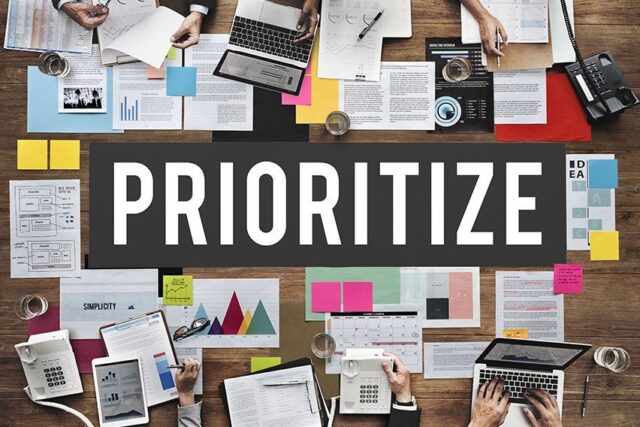
In recent years, remote work has become an increasingly popular option for professionals in many industries. Working from home offers many benefits, such as flexibility and convenience, but it can also present unique challenges.
One of the biggest hurdles that remote workers face is staying motivated and engaged over the long term. Without the structure and social interaction of a traditional office, it can be difficult to maintain focus and productivity.
Fortunately, there are many strategies that you can use to stay motivated and engaged when working remotely. In this blog post, we will explore 10 of the most effective techniques for staying on track and achieving your goals while working from home.
1. Create a designated workspace

While it may be tempting to work from the comfort of your bed or couch, it can lead to distractions and decreased productivity. Having a designated workspace is essential for boosting your motivation and engagement.
Set aside a specific area in your home that is solely dedicated to work. This could be a spare room, a corner of your living room, or even a desk in your bedroom. The key is to create a space that is separate from the rest of your living environment, where you can focus solely on your work tasks.
2. Stick to a routine and set a schedule
One of the biggest challenges of working remotely is maintaining a sense of structure and routine. Without a physical office to report to, it can be tempting to fall into a pattern of working whenever you feel like it or procrastinating until the last minute. That is why you need to stick to a routine and set a work schedule.
Start by establishing a consistent daily routine. Wake up at the same time each day, get dressed, and have a designated workspace. This will help signal to your brain that it is time to focus and be productive. Treat your remote work as you would a regular office job, with set hours for work, breaks, and lunch.
Creating a schedule is equally important. Outline your tasks and deadlines for the day, week, or month. Prioritize your work and allocate specific time slots to each task. Breaking your day into manageable chunks will help you stay on track.
3. Set clear goals and prioritize tasks

When you don’t have a physical office or colleagues around you, it can be easy to lose focus or feel overwhelmed by the lack of structure. It is essential to create a roadmap of what you want to achieve and break it down into smaller, manageable tasks.
Start by identifying your long-term goals and then break them down into smaller, actionable steps. This will not only give you a clear direction but also a sense of accomplishment as you tick off each task. Prioritizing these tasks based on their requirements will help you stay organized and focused on what needs to be done.
One effective strategy is to use productivity tools or project management software that allows you to track your progress, set deadlines, and collaborate with your team if necessary. These tools can help you visualize your goals, allocate your time effectively, and keep you accountable for completing your tasks.
4. Take regular breaks and practice self-care
Taking breaks throughout the day lets you recharge and rejuvenate your mind and body. Remember to regularly step away from your workspace, stretch your legs, and give yourself a mental break. This could involve going for a short walk, doing some light exercise, or simply taking a few minutes to relax and clear your mind.
In addition to regular breaks, integrating self-care practices into your daily routine can significantly impact your motivation and engagement. Self-care looks different for everyone, but it often involves activities that promote relaxation, stress reduction, and overall well-being. This could include practicing mindfulness or meditation, engaging in hobbies or activities you enjoy, or even pampering yourself with a bubble bath or a good book.
5. Stay connected with colleagues and establish virtual social interactions

While you might not be physically present in an office setting, there are various ways to maintain social connections with your coworkers. Schedule regular video conferences or virtual meetings to catch up on work-related matters and simply chat and check in on each other. This helps to recreate the sense of camaraderie and support that you would typically experience in an office environment.
In addition to formal meetings, make use of instant messaging platforms or team collaboration tools to maintain continuous communication throughout the day. This allows for quick and informal conversations, fostering a sense of connection and collaboration.
If you are interested in connecting with professionals outside of your organization, it is better to use sites such as Leadar to find them.
6. Seek motivation from within and set personal rewards
Start by identifying what truly motivates you. Is it achieving certain goals, personal growth, or the satisfaction of completing tasks? Once you have a clear understanding of what drives you, use that as fuel to stay motivated. Remind yourself of your long-term aspirations and how your current work contributes to them.
Setting personal rewards can also serve as a powerful incentive. For instance, after completing a challenging project or reaching a milestone, treat yourself to something you enjoy — a favorite meal, a day off, or a small splurge. These rewards provide a sense of accomplishment and reinforce the idea that your hard work is recognized and celebrated.
Conclusion

We hope you found our blog post on strategies for staying motivated and engaged while working remotely helpful.
Working from home can present some challenges, but with the right mindset and strategies in place, you can stay productive and engaged in your work. Remember to create a designated workspace, establish a routine, set clear goals, and take breaks to recharge.
By implementing these strategies, you can maintain your focus and drive, ensuring success in your remote work environment. Stay motivated, stay engaged, and continue to thrive in your remote work journey!







